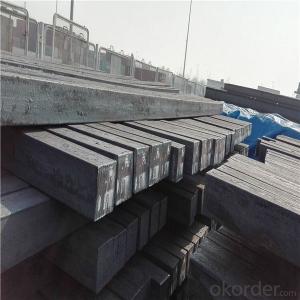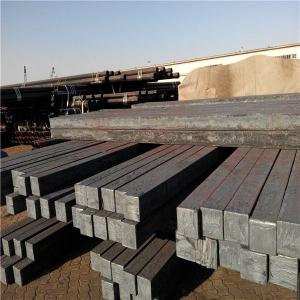Q275 Prime Steel Billet for hot roll steel prosucts
- Loading Port:
- Guangzhou
- Payment Terms:
- TT OR LC
- Min Order Qty:
- 1000 m.t.
- Supply Capability:
- 19983 m.t./month
OKorder Service Pledge
OKorder Financial Service
You Might Also Like
Item specifice
Billets, or ingots (as they sometimes referred to), are not of practical use until they have been formed into
more functional shapes and sizes. While they have already been put in the furnace, they still require a series
of shaping and molding procedures such as hot and cold working, milling and cutting before they are sold in
hardware stores, or used for different applications. The unformed billets, however, can be used in striking
currency such as coins and as reserves, similar to gold bars.
Qaulity:own factory, stable quality
Tolerance: Strictly according to the G/B and JIS standard
Delivery time: within 45 days after receiving the L/C or advanced T/T payment.
Price term: FOB/CIF/ CFR according to clients requirements
.
Gade:
Standard | C(%) | Mn(%) | S(%) | P(%) | Si(%) |
Q195 | ≤0.12 | ≤0.50 | ≤0.040 | ≤0.035 | ≤0.30 |
Q235 | ≤0.20 | ≤1.40 | ≤0.045 | ≤0.045 | ≤0.35 |
Q275 | ≤0.22 | ≤1.50 | ≤0.045 | ≤0.045 | ≤0.35 |
20MnSi | 0.17-0.25 | 1.2-1.6 | ≤ 0.050 | ≤ 0.050 | 0.40-0.80 |
3SP | 0.14-0.22 | 0.40-0.85 | ≤ 0.050 | ≤ 0.040 | 0.05-0.15 |
5SP | 0.28-0.37 | 0.50-1.00 | ≤ 0.050 | ≤ 0.040 | 0.15-0.30 |
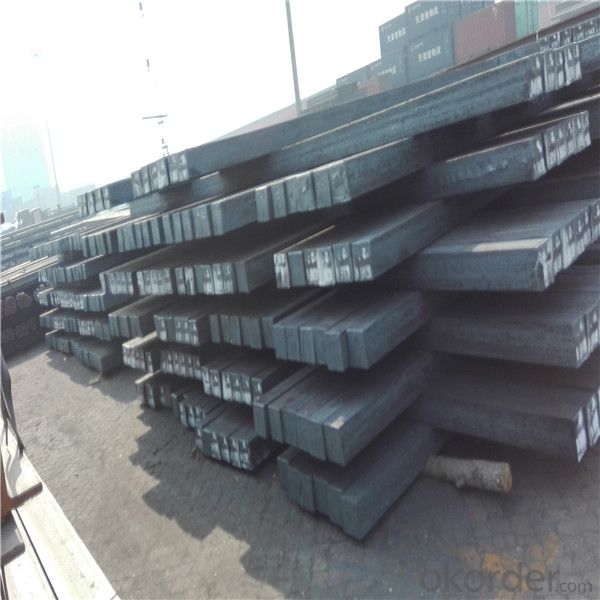
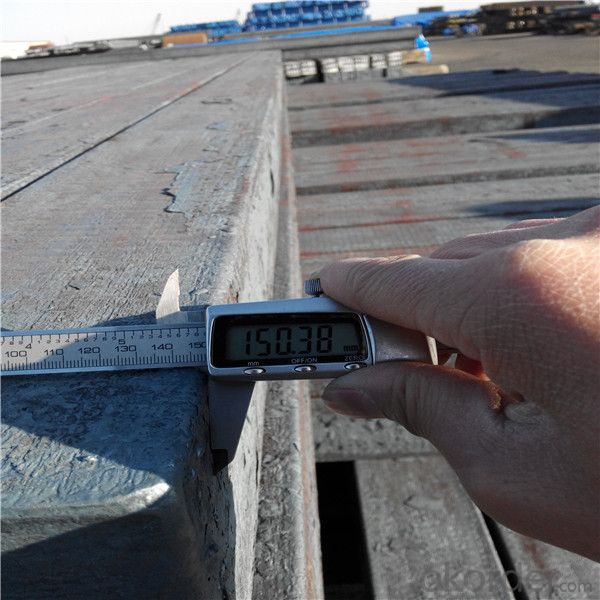
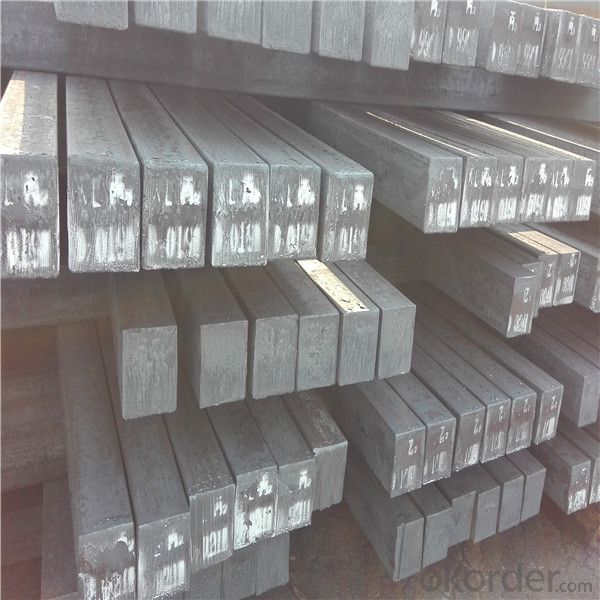
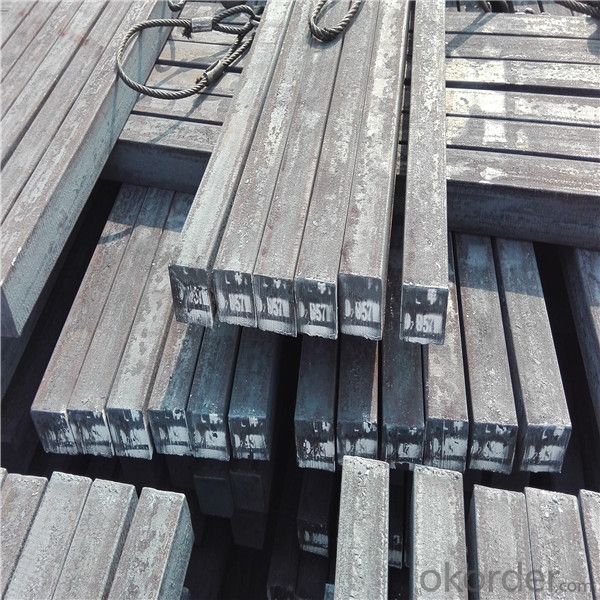
Our service :
We have a plant and professional team to provide our best service, from the start of production until the
loading into the vessel, we have a complete quality follow up procedure, to assure our products arrives to the customer with satisfaction. Welcome new and old customers
to contact us for future business relationships! We will give you a surpise price.
Packing :
Within 30 days
1.Standard export package
2.In bundles with steel strips
3.As the requirements of the customers
FAQ:
Q: What is payment terms?
A: FOB 30% T/T IN ADVANCE AS DEPOSIT AND 70% T/T BEFORE SHIPMENT
CIF and CFR 30% T/T IN ADVANCE AS DEPOSIT AND 70% T/T AS THE COPY OF B/L OR L/C AT SIGHT
Q:How to guarantee the quality of the products?
A:We have established the international advanced quality management system,every link from raw material
to final product we have strict quality test;We resolutely put an end to unqualified products flowing into the market.
At the same time, we will provide necessary follow-up service assurance.
Q:How long can we receive the product after purchase?
A :In the purchase of product within three working days, We will arrange the factory delivery as soon as possible.
The pecific time of receiving is related to the state and position of customers.
- Q:Charcoal classification
- Hard charcoal. By hardwood such as Fagaceae Quercus, Castanopsis trees, secondary birch and etc..Broad-leaved charcoal. Charcoal made from a mixture of hard and soft hardwood.Pine charcoal. Carbon fired from pine or other needle wood. In addition to bamboo and bamboo charcoal burning with shells, stones (coconut shell, peach stone charcoal etc.) wood raw material firing. Charcoal collected from household stoves in the cell known as carbon. If the charcoal is crushed and mixed with proper adhesive, and then pressed, formed and roasted, the deposit is made. According to the burning process of silica and carbon black.
- Q:Are steel billets magnetic?
- Indeed, steel billets possess magnetic qualities. As an alloy predominantly consisting of iron, steel constitutes a ferromagnetic substance, rendering it capable of magnetization. Consequently, steel exhibits magnetic properties. Given that steel billets are solid blocks or bars composed of steel, they retain the magnetic characteristics inherent to their constituent material.
- Q:Are steel billets used in the production of household goods?
- No, steel billets are not typically used in the production of household goods. Steel billets are semi-finished products that are used as raw material for various industries, such as construction, automotive, and manufacturing. They are usually hot-rolled into different shapes, such as bars, rods, or sheets, which are then further processed to create the desired household goods. For household goods, manufacturers often use specific types of steel, such as stainless steel or carbon steel, that have been processed and shaped according to the particular product requirements.
- Q:What is the role of steel billets in the construction of railway stations?
- Steel billets play a crucial role in the construction of railway stations. These billets are essentially semi-finished steel products, typically in a rectangular or square shape, that are used as raw material for various construction purposes. In the context of railway stations, steel billets are primarily used in the fabrication of structural components such as beams, columns, and trusses. These components provide the necessary strength and stability to support the weight of the station building, platforms, and any other structures associated with the station. One of the main advantages of using steel billets in railway station construction is their high strength-to-weight ratio. Steel is known for its exceptional strength, making it an ideal material for supporting heavy loads. By using steel billets, engineers can design and construct railway stations that can withstand the constant traffic and heavy footfall experienced in these public spaces. Additionally, steel billets offer excellent durability, corrosion resistance, and fire resistance, all of which are essential factors in ensuring the long-term safety and structural integrity of railway stations. These properties make steel billets a reliable and cost-effective choice for construction projects where safety and longevity are of utmost importance. Furthermore, steel billets can be easily shaped and fabricated into various sizes and dimensions, allowing for flexibility in design and construction. This versatility enables architects and engineers to create aesthetically appealing and functional railway station structures that meet the specific requirements of the project. Overall, the role of steel billets in the construction of railway stations is to provide the necessary strength, durability, and versatility required for the structural components that support these vital transportation hubs. By using steel billets, railway station construction projects can be completed efficiently, ensuring the safety and comfort of passengers for years to come.
- Q:What are the different methods of surface inspection for steel billets?
- There are several methods of surface inspection for steel billets, including visual inspection, magnetic particle inspection, ultrasonic testing, eddy current testing, and dye penetrant testing. Visual inspection involves a thorough visual examination of the billet's surface to detect any visible defects or irregularities. Magnetic particle inspection uses magnetic fields and iron particles to identify surface cracks or defects. Ultrasonic testing uses high-frequency sound waves to detect internal and surface flaws in the billet. Eddy current testing uses electromagnetic induction to detect surface defects, while dye penetrant testing involves applying a colored dye to the surface and inspecting it for any indications of defects. These methods help ensure the quality and integrity of steel billets before further processing or use.
- Q:What is the role of steel billets in the manufacturing of conveyor belts?
- The manufacturing process of conveyor belts heavily relies on steel billets, which are essential in creating the various components of the belt. These billets, derived from molten steel, serve as the initial stage in production. To begin, the steel billets undergo heating and rolling processes to form thin sheets or strips, depending on the desired thickness of the conveyor belt. These sheets are then further processed to construct the core structure of the belt, providing the necessary strength and durability to withstand demanding conditions. Moreover, steel billets play a crucial role in producing the metal reinforcements within the belt. These reinforcements, typically in the form of steel cords or wires, are embedded into the belt to enhance its tensile strength, preventing stretching or breaking under heavy loads and ensuring longevity and reliability. Additionally, steel billets are utilized in manufacturing the pulley system of the belt. Pulleys are essential components that facilitate the movement of materials along the belt. Made from solid steel billets, these pulleys are machined and designed to smoothly guide the belt while maintaining proper tension. In conclusion, steel billets serve as the foundation for creating the core structure, reinforcements, and pulleys of conveyor belts. Their strength and versatility make them an ideal material for producing belts that can withstand the rigorous conditions of industrial applications, guaranteeing efficient and reliable material handling processes.
- Q:How are steel billets used in the production of construction components?
- Construction components rely on steel billets as a crucial raw material. These billets are utilized primarily in the creation of various structural elements like beams, columns, and bars, which compose the framework of buildings and infrastructure projects. The process commences with steel billets, semi-finished products formed by casting molten steel into rectangular or square shapes. Subsequently, these billets undergo further processing and transformation into specific construction components through diverse manufacturing techniques. One widespread application of steel billets involves beam production, which is indispensable for supporting the weight of floors, roofs, and walls in buildings. The billets are subjected to rolling mills, where they are heated and passed through a series of rollers to acquire the desired beam profile. This process facilitates the production of beams in varying sizes and lengths, tailored to the unique requirements of each construction project. Steel billets are also employed in the manufacture of columns, which provide vertical support to structures. Similar to beams, billets are processed through rolling mills to achieve the necessary column shape. Subsequently, the columns are connected to the beams, creating the skeletal framework of the building and ensuring strength and stability. Additionally, steel billets find application in the production of reinforcing bars, commonly referred to as rebar, used for reinforcing concrete structures. These rebar play a critical role in enhancing the strength and durability of concrete. Billets are once again processed through rolling mills to create rebar in various diameters and lengths. The rebar is then embedded within the concrete to provide tensile strength, preventing cracking, and increasing the overall structural integrity. In summary, steel billets are pivotal in the production of construction components as they serve as the starting point for the manufacturing process. They are transformed into beams, columns, and rebar, which offer the necessary strength and stability required for building and infrastructure projects.
- Q:What are the different methods of hardness testing for steel billets?
- Steel billets can be tested for hardness using various methods, each with its own advantages and levels of accuracy. Some commonly used methods are: 1. Rockwell hardness testing: This method determines hardness by measuring the depth of indentation caused by a specific load on the surface of a steel billet. The hardness value is derived from the depth of penetration, making it a convenient and quick test. 2. Brinell hardness testing: In this method, a spherical indenter is used to create an impression on the surface of a steel billet under a specific load. The diameter of the resulting impression is measured to determine the hardness value. Brinell testing is particularly useful for large billets or materials with a coarse microstructure. 3. Vickers hardness testing: Vickers testing involves using a pyramidal diamond indenter to create an impression on the surface of a steel billet. The hardness value is calculated based on the diagonal length of the impression and the applied load. Vickers testing is suitable for various materials, including steel billets. 4. Knoop hardness testing: Similar to Vickers testing, Knoop hardness testing also uses a pyramidal diamond indenter. However, the indentation shape is elongated and narrower, allowing for measurements on smaller or thinner samples. This method is often used for precise and microhardness testing. 5. Leeb hardness testing: Leeb testing is a portable and non-destructive method that uses an impact device to measure the rebound hardness of a steel billet. The device strikes the surface with a small ball and measures the velocity of the rebound, which is then converted into a hardness value. This method is commonly used for on-site or in-field measurements. 6. Ultrasonic hardness testing: Ultrasonic testing measures the hardness of a steel billet by transmitting ultrasonic waves through the material and measuring the time taken for the waves to travel through the billet. This data is then converted into a hardness value. Ultrasonic testing is non-destructive and suitable for large or thick billets. It's important to consider that each hardness testing method has its own limitations and factors to consider. The choice of method will depend on factors such as the size, shape, and surface condition of the steel billet, as well as the desired accuracy and convenience of the testing process.
- Q:How are steel billets used in the production of industrial machinery?
- Steel billets are essential components in the production of industrial machinery. They serve as the raw material that is shaped and transformed into various machine parts. The billets are typically heated and then subjected to a number of manufacturing processes such as forging, rolling, or extrusion. One common method of using steel billets in industrial machinery production is through forging. In this process, the billets are heated to a high temperature and then shaped by applying compressive forces using a forging press or hammer. This allows the steel to be molded into the desired shape and size, creating components such as gears, crankshafts, or connecting rods. Another method is rolling, where the heated steel billets are passed through a series of rollers to gradually reduce their thickness and shape them into long sheets or bars. These rolled steel products can then be further processed and used in the construction of machine frames, chassis, or structural components. Extrusion is another technique that utilizes steel billets in industrial machinery production. In this process, the billets are heated and forced through a die to create complex shapes with consistent cross-sections. Extruded steel parts are commonly used in the production of machine components such as tubes, pipes, or profiles. Overall, steel billets form the foundation for the manufacturing of industrial machinery. They undergo various shaping and transformation processes to create the necessary components that contribute to the overall functionality and durability of the machinery.
- Q:What is the typical production process for steel billets?
- The typical production process for steel billets involves several steps. First, raw materials such as iron ore, coal, and limestone are obtained. These materials are then processed and transformed into iron through a blast furnace or direct reduction process. The iron is further refined in a basic oxygen furnace or an electric arc furnace to remove impurities and adjust the composition. Once the iron is refined, it is cast into large rectangular molds known as ingots. These ingots are then heated and rolled into semi-finished products called blooms or slabs. Blooms are typically square or rectangular in shape, while slabs are flat and rectangular. The next step is to further process the blooms or slabs into billets. This is done by reheating the semi-finished products and passing them through a series of rolling mills. The rolling mills apply pressure to shape the metal and reduce its thickness. This process is known as hot rolling. After hot rolling, the billets are cooled and inspected for any defects. They may undergo additional processes such as surface treatment or heat treatment to improve their properties. The billets are then typically cut into desired lengths and stored before further processing or shipment to customers. Overall, the production process for steel billets involves obtaining raw materials, refining the iron, casting it into semi-finished products, hot rolling, and final inspection and processing. This process ensures that the steel billets meet the required specifications and quality standards before they are used for various applications in industries such as construction, automotive, and manufacturing.
1. Manufacturer Overview |
|
|---|---|
| Location | |
| Year Established | |
| Annual Output Value | |
| Main Markets | |
| Company Certifications | |
2. Manufacturer Certificates |
|
|---|---|
| a) Certification Name | |
| Range | |
| Reference | |
| Validity Period | |
3. Manufacturer Capability |
|
|---|---|
| a)Trade Capacity | |
| Nearest Port | |
| Export Percentage | |
| No.of Employees in Trade Department | |
| Language Spoken: | |
| b)Factory Information | |
| Factory Size: | |
| No. of Production Lines | |
| Contract Manufacturing | |
| Product Price Range | |
Send your message to us
Q275 Prime Steel Billet for hot roll steel prosucts
- Loading Port:
- Guangzhou
- Payment Terms:
- TT OR LC
- Min Order Qty:
- 1000 m.t.
- Supply Capability:
- 19983 m.t./month
OKorder Service Pledge
OKorder Financial Service
Similar products
New products
Hot products
Related keywords
